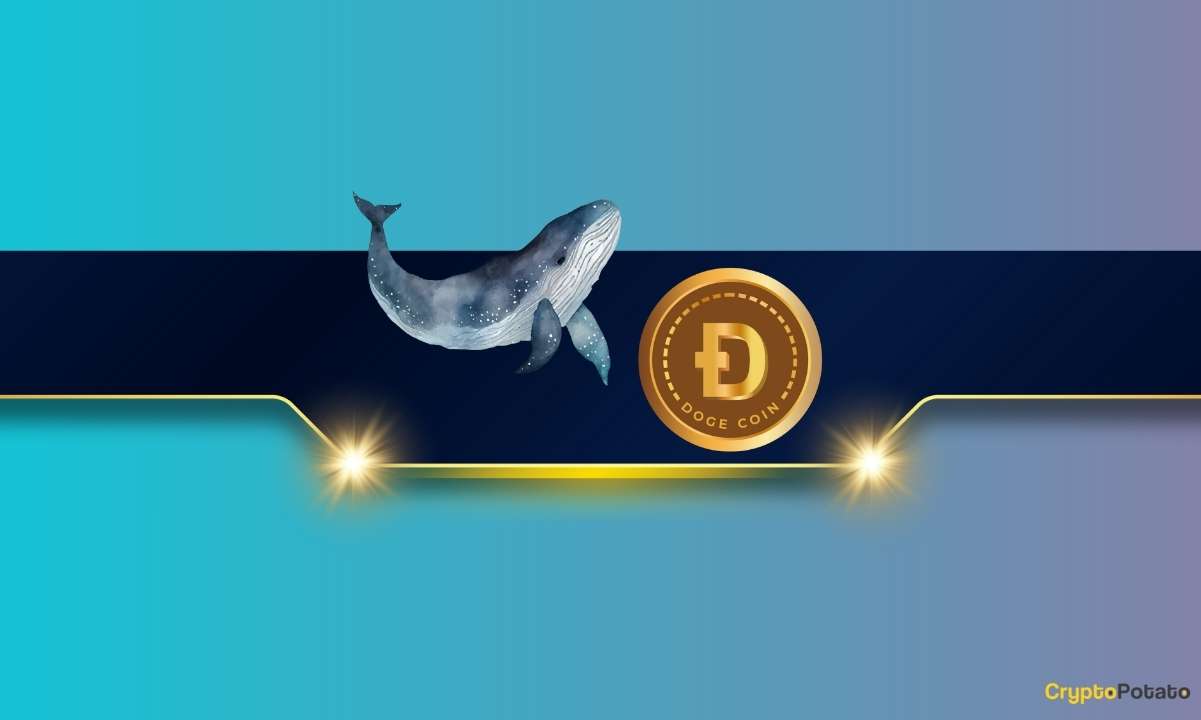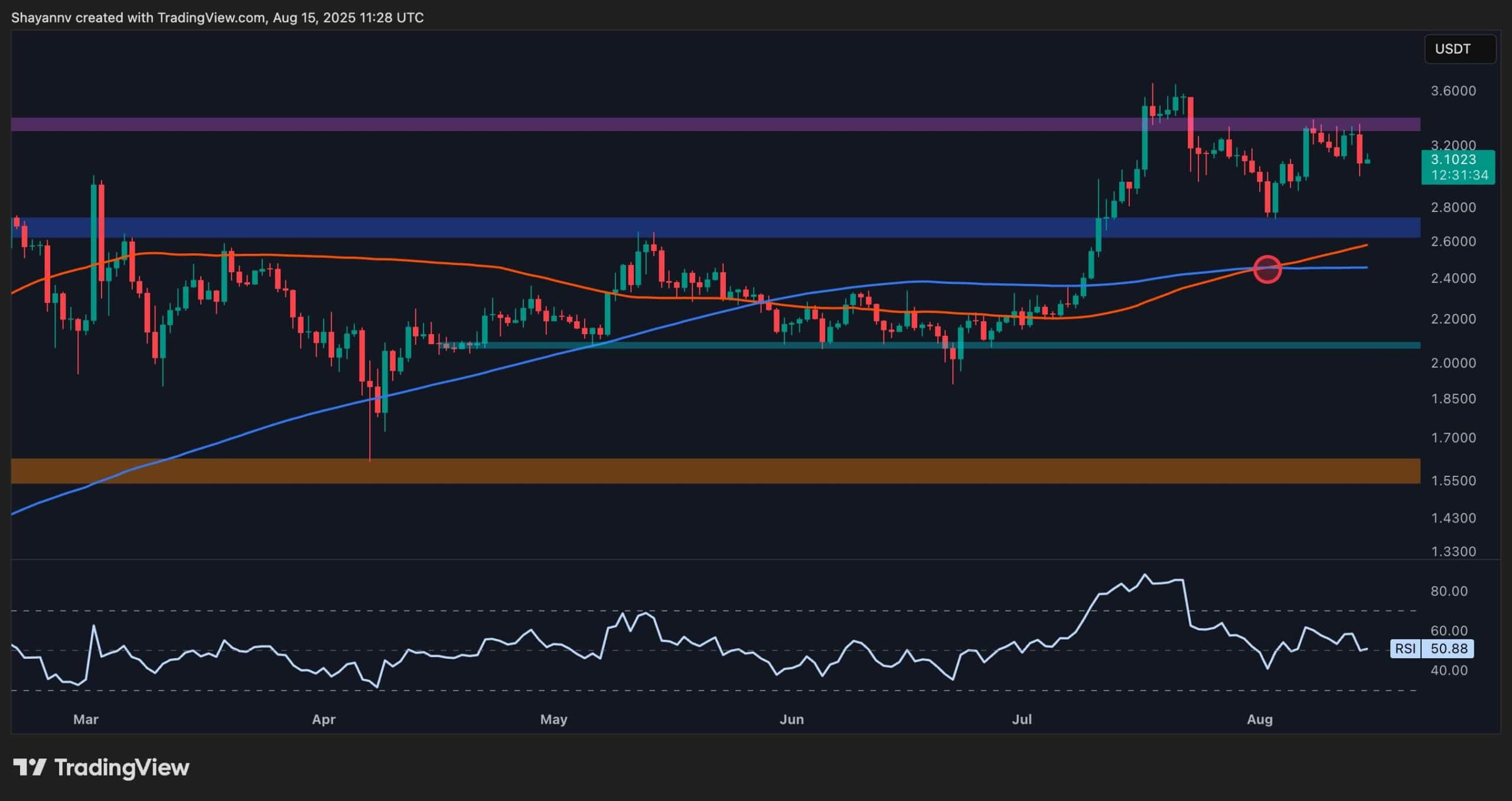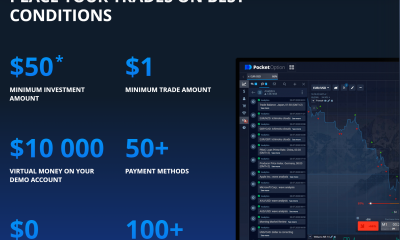Cryptocurrency
The 5 Best Crypto Staking Platforms in 2025: Everything You Need to Know

Crypto staking is the backbone of every Proof-of-Stake (PoS) blockchain. Without it, most crypto networks wouldn’t be able to secure their primary mechanism for security and transaction validation. That’s how important it is.
Staking also ensures that validators have a financial incentive to act honestly, as their staked tokens can be slashed, either partially or fully, for engaging in malicious behavior or failure to perform their respective duties.
Another key point is that staking is crucial for keeping blockchain ecosystems decentralized. It provides a structured way to reward participants for contributing to a network’s health and overall functionality.
This article takes a deep dive into the best crypto staking platforms, each reviewed carefully by their functionalities and amount of assets supported. It also goes through the basics of staking and how to stake crypto in multiple ways.
Quick Navigation
What Is DeFi Staking?
Staking is the process of locking up cryptocurrency in a wallet to help secure and maintain a blockchain network that uses a Proof of Stake (PoS) consensus mechanism. In return for committing your tokens, you earn rewards—typically in the form of additional cryptocurrency. By staking, you contribute to the network’s security, validate transactions, and help create new blocks on the blockchain.
In essence, staking incentivizes honest behavior. Users who stake their coins can gain rewards for supporting the network, while malicious or negligent validators risk having their tokens “slashed” (i.e., a portion of their stake is removed). This setup encourages active participation and maintains the blockchain’s integrity.
Benefits of Crypto Staking
There are several advantages to crypto staking, not just for users but also for blockchain networks and DeFi protocols:
- Passive yield generation:
Staking allows you to earn rewards without selling cryptocurrency, creating a consistent passive income stream. If reinvested, these rewards can compound, boosting your overall returns.
Depending on the blockchain and market environment, annual percentage yields (APYs) can range from single digits to over 20%, making them a more lucrative option than many conventional financial instruments.
- More accessibility and network support:
Unlike PoW blockchains, staking requires no specialized hardware or heavy energy use because PoS networks only require relatively smaller amounts, making it accessible to a broad range of participants.
Moreover, by locking up tokens, you help validate transactions on the blockchain, protecting it against threats like 51% attacks and maintaining long-term stability. This rewards users for their role in network health.
Liquid staking derivatives (Lido’s stETH, Rocket Pool’s rETH, etc) let you access your staked assets in DeFi while still earning staking rewards, providing flexibility for additional trading or lending activities.
Some popular protocols like EigenLayer allow you to “restake” your already-staked tokens, using them as collateral or deploying them in other staking systems. This strategy can compound yields further and increase engagement within the DeFi ecosystem. But, the biggest perk is that restaking allows DeFi projects to leverage the security and capital of already established networks.
This will be explained further in the article, but for now, note that restaking is far more complex than traditional or liquid staking, requiring more responsibilities and technical knowledge to carry out the process.
Best Crypto Staking Platforms in 2025: Our Top Picks
Below are some of the best staking platforms, providing a comprehensive breakdown of their features, supported assets, and other important information.
Jito – Solana’s Largest Liquid Staking Platform
Jito is the largest liquid staking platform on the Solana blockchain. Participants stake SOL and receive JitoSOL in exchange, which is a liquid staking token (LST) that can be used in other Solana-based dApps. This allows users to lock their staked tokens but use a tokenized version in other DeFi projects to generate more yields.
The project’s MEV approach—often controversial—has drawn attention. Some critics argue that MEV exploits traders by front-running orders or reordering transactions, while others see it as a way to improve market efficiency and ensure lenders are repaid.
Jito tackles MEV by implementing an auction system where traders bid on profitable transaction sequences. Third-party block engines simulate these bids to identify the most valuable transaction groupings. The resulting profits are funneled back to validators and JitoSOL holders, effectively curbing spam benefits and increasing staking rewards.
Key Features of Jito
- Liquid staking with JitoSOL: Users stake SOL and receive JitoSOL, representing their staked assets. JitoSOL can be deployed across DeFi (e.g., lending, trading, or liquidity pools) while continuing to earn staking rewards.
- MEV Integration: Jito captures MEV by optimizing transaction ordering within blocks, redistributing extra revenue to JitoSOL holders, and boosting overall staking yields.
- Full decentralization: The protocol’s governance token, JTO, grants holders voting rights on delegation strategies, treasury management, and protocol updates, while the Jito DAO ensures community-driven oversight.
- Security and transparency: Jito relies on audited smart contracts and delegates SOL to established validators within the Solana ecosystem. Governance by the Jito DAO further enhances transparency.
Supported Assets
Given Jito’s exclusive integration with the Solana blockchain, it only supports SOL tokens.
EigenLayer – The Restaking King
EigenLayer is a middleware protocol built on Ethereum that pioneered the idea of restaking, meaning you can deposit staked ETH (like stETH) into a new set of liquidity pools. These staked tokens are then distributed across various decentralized applications or AVS (Actively Validated Services), oracles, Layer 2s, data availability layers, cross-chain bridges, and more.
By doing so, EigenLayer allows these services to tap into Ethereum’s robust security without creating their own separate validator networks.
Key Features of EigenLayer
- Restaking marketplace: In a sense, EigenLayer is a sort of marketplace where validators and protocols negotiate pooled security for a cost. Protocols can buy staked tokens or stETH as an “extra layer” of security. Meanwhile, validators can choose which protocols they want to secure, evaluating them for risk and reward. They also control how much staked capital is allocated, preventing overexposure to any single protocol.
- Flexible staking options: Users can opt for solo staking, run their own nodes, delegate their stake to third parties, and even perform dual staking, requiring both ETH and a native token to be staked. This way, the protocol welcomes more advanced validators, users, and developers.
- Programmability: Developers can customize validation rules and security parameters for their EigenLayer-based applications, allowing for more nuanced protection, including multi-token quorums tailored to specific risk profiles.
- Modular security: EigenLayer supports a modular approach, letting stakers secure specific functionalities or “modules,” such as decentralized storage, DeFi applications, or cross-chain bridges. This flexibility tailors security to each project’s unique requirements.
Supported Assets
EigenLayer only supports ETH, any ERC-20 token, and liquid staking tokens such as Lido’s stETH and Rocketpool’s rETH.
Lido Staking
Lido is the largest decentralized liquid staking platform in the industry, reaching a peak of roughly $40B in total value locked (TVL) in mid-2024, representing a massive share of the total DeFi TVL.
Lido’s appeal is straightforward: It allows users to earn staking rewards on various PoS cryptocurrencies without requiring them to unstake their assets. This makes Lido the pioneer of liquid staking: The protocol issues a tokenized version of ETH, stETH, which represents the staked assets.
Users can deploy stETH across several DeFi projects in Ethereum, allowing them to earn additional yield on top of their staked assets.
Key Features of Lido
- Liquid Staking: When you stake with Lido, you receive a derivative token, like stETH, on a 1:1 basis. Moreover, users can stake any amount of crypto, except for validators, which require the typical 32 ETH deposit.
- Validator Distribution: Staked tokens are spread across a network of professional validators chosen by the Lido DAO, reducing risks tied to validator downtime or slashing penalties.
- Open source and audited: Lido’s smart contracts are publicly available and regularly audited. Audits can be found on GitHub.
- Fee structure: Lido charges a 10% fee on staking rewards, which is shared between node operators and the Lido DAO treasury.
Supported Assets
Lido supports a wide variety of crypto assets, including:
- ETH is the most widely used staking option on Lido.
- Polygon (MATIC): Tokenized as stMATIC.
- Kusama (KSM): Tokenized as stKSM.
- Polkadot (DOT): Tokenized as stDOT.
However, support for SOL was discontinued due to disagreements and community votes over unsustainable long-term fees on both blockchains.
Binance Earn
Binance Earn is a yield-focused offering within the Binance ecosystem, designed to help both novice and experienced investors earn passive income on their cryptocurrency holdings.
It serves as a one-stop solution for several investment products, championed by its extensive staking program, where users can choose Locked Staking, where they deposit their crypto for a set duration (e.g., 30, 60, or 90 days) to earn higher rewards.
Key Features of Binance Earn
- DeFi and liquid staking: Connects users to external protocols, offering higher APYs but carrying general risks associated with using these DeFi platforms. Binance also supports ETH 2.0 Staking, enabling participants to stake Ethereum without operating their own validator node; in return, users receive BETH as a tokenized representation of their staked ETH.
- Savings products: Besides staking, Binance Earn provides Flexible Savings, which allows immediate access to funds but offers more modest interest rates. Locked Savings, on the other hand, require users to commit their assets for a predefined period in exchange for higher yields.
- Dual investment: The platform offers more advanced products like Dual Investment, a high-yield option involving two different cryptocurrencies with returns contingent on market conditions.
- BNB Vault: A popular feature for Binance Coin (BNB) holders. It combines blending staking, savings, and liquidity farming all in one to maximize returns on BNB holdings.
Supported Assets
Binance Earn supports over 180 cryptocurrencies up for staking, including major assets like Bitcoin, Ethereum, Solana, and Cardano, as well as stablecoins such as USDT and USDC.
Ethena – A Yield-Bearing Stablecoin Backed by Crypto
Ethena USDe is a synthetic dollar stablecoin built on Ethereum, designed to maintain a 1:1 peg with the U.S. dollar through delta-neutral hedging and on-chain collateral.
Launched by Ethena Labs, the platform offers a censorship-resistant alternative to traditional stablecoins. It is backed entirely by crypto assets such as ETH, BTC, and liquid staking derivatives.
Key Features of Ethena
- USDe: Ethena’s USDe employs a delta-neutral hedging model to balance any fluctuations in the value of its underlying collateral. The protocol takes short positions on derivatives contracts to keep the stablecoin pegged at $1 without depending on fiat reserves or traditional custodians.
- Crypto collateral: All minted USDe is backed by on-chain cryptocurrencies, including ETH, stETH, BTC, and various other stablecoins. This maintains a consistent ratio of collateral to outstanding tokens.
- Yield-bearing token: One of Ethena’s most popular offerings is the ability to stake USDe to earn sUSDe, a yield-bearing derivative token that appreciates over time. All returns on investments are generated through 1) Ethereum staking rewards and 2) the funding spreads earned through delta-neutral derivatives positions. The staking process follows the ERC-4626 Token Vault standard.
- Insurance fund: Ethena is one of the few DeFi protocols to offer a reserve fund that acts as a buyer of last resort. This fund is a safety net in case of extreme scenarios, like negative funding rates or sudden market shocks.
Supported Assets for Staking
Ethena supports staking primarily with its native token, USDe. Upon staking, users receive sUSDe, which captures accumulated rewards from both derivatives funding spreads and Ethereum staking yields.
How to Stake Crypto In a Few Steps
There are several ways to stake crypto. But whichever way, you must first get a proper crypto wallet to begin your staking journey. You can look at our guide on the best DeFi wallets to analyze and compare some of the top options in 2025.
Staking With Crypto Wallets
Some crypto wallets like Trust Wallet, Exodus, and Phantom allow you to stake assets directly without leaving the app.
For example, if you want to stake using the Phantom wallet, simply go to your account and choose an asset. Next, click on the asset and select Staking.
Phantom offers two options: native staking, where you simply lock up assets in the Solana blockchain, and liquid staking using Jito.
If you choose native staking, then you have to pick a validator. The Phantom Validator is the most popular due to its trustworthiness and security, but rewards are usually lower. Afterward, just enter the amount you wish to stake. Note that with native staking, your assets are locked, so you cannot use them across dApps for extra yield until the cooldown period ends.
On the other hand, staking with Jito may result in bigger rewards and lower fees. Once you deposit your assets, you’ll get JitSOL, which you can use across DeFi protocols to win some extra rewards.
Using a Staking Platform
Using a crypto wallet, you can join a crypto staking pool where users deposit their funds to increase the chances of earning rewards. This is ideal for those with smaller amounts of crypto or who can’t meet minimum staking requirements in a given protocol.
For example, if you want to stake ETH, you can simply go to Lido, choose the number of tokens you wish to stake, click on proceed, and, once you have done so, receive stETH tokens representing the staked amount. This allows you to use the tokenized version of your funds across Ethereum-based DeFi protocols.
Node Staking
Node staking is more complicated and reserved for those who run a validator node on Solana or Ethereum. This means validators get to stake their own currency plus the currency of other liquid stakers. You earn rewards on your own staked assets and a commission fee based on the rewards your node generates for liquid stakers.
One of the best pools for node staking is Rocketpool, one of the largest ETH staking pools. It requires at least 16 ETH to operate a node but comes with a 14% cut from rewards. Other platforms are StakeWise V3 and Marinade Finance for Solana users.
Exchange Staking
An alternative option would be centralized staking, in which exchanges like Binance or Coinbase handle the staking process on your behalf, simplifying the experience but requiring trust in their security measures.
For instance, Binance Earn allows you to choose from different staking products, from popular cryptocurrencies to stablecoins, with different durations and APRs.
Frequently Asked Questions
Can I Unstake My Assets?
Yes, you can unstake assets after a cooldown period, which depends on the protocol you’re using. This is to prevent validators from immediately withdrawing their funds, which could allow malicious actors to avoid penalties, such as slashing. It also helps maintain economic stability by preventing large-scale, sudden withdrawals.
What’s the Difference Between Native Staking and Liquid Staking?
Native staking requires the user to lock assets to generate rewards. Meanwhile, Liquid staking platforms give users a tokenized version of their already staked assets, which can be used across different DeFi projects, boosting their earning potential.
What Makes Restaking More Complex Than Traditional Staking?
Restaking allows you to reuse already staked tokens as collateral in other protocols. This allows users to compound rewards while offering extra security for multiple decentralized applications and blockchain protocols. The issue is that restaking requires a lot of technical expertise in DeFi since the user is interacting with multiple smart contracts and DeFi projects and must manage a higher level of risk.
Binance Free $600 (CryptoPotato Exclusive): Use this link to register a new account and receive $600 exclusive welcome offer on Binance (full details).
LIMITED OFFER for CryptoPotato readers at Bybit: Use this link to register and open a $500 FREE position on any coin!
Cryptocurrency
Ethereum Foundation, Whales, and Hackers: What’s Driving the ETH Sell-Off?

TL;DR
- Whales, hackers, and the Ethereum Foundation wallets moved over $500M in ETH through large sales and withdrawals.
- Ethereum transfers rose to 4.6M ETH, nearing the monthly high of 5.2M recorded in July.
- Staking inflows hit 247,900 ETH, the highest in a month, locking more supply from trading.
Large Withdrawals and Whale Activity
Ethereum (ETH) has seen heavy movement from major wallets over the past few days. On-chain data from Lookonchain shows a newly created wallet pulled 17,591 ETH, worth $81.62 million, from Kraken in just two hours.
Over three days, two new wallets withdrew a combined 71,025 ETH, valued at $330 million, from the exchange.
One of these wallets, address 0x2A92, has withdrawn 53,434 ETH, worth $242.34 million, in two days. This includes a recent purchase of 30,069 ETH, valued at $138.46 million, during a market drop.
Major ETH Holders Offload Millions Amid Price Rally
In contrast, several separate entities have been disposing of some ETH holdings. A wallet tied to a hacker address 0x17E0 sold 4,958 ETH for $22.13 million at $4,463, securing a profit of $9.75 million. Earlier this year, the same address sold 12,282 ETH at $1,932 and later bought back part of the amount at higher prices.
A different whale sold 20,600 ETH for $96.55 million over the past two days, generating a profit of more than $26 million after holding the position for nine months.
Meanwhile, an Ethereum Foundation-linked wallet, 0xF39d, sold 6,194 ETH worth $28.36 million in the last three days at an average price of $4,578.
Recent sales from the same wallet included an additional 1,100 ETH and 1,695 ETH for over $12.7 million combined.
The #EthereumFoundation-linked wallet(0xF39d) sold another 1,300 $ETH($5.87M) at $4,518 ~11 hours ago.
Over the past 3 days, this wallet has sold a total of 6,194 $ETH($28.36M) at an average price of $4,578.https://t.co/4hfCWymHVG pic.twitter.com/ErUyEY8SJy
— Lookonchain (@lookonchain) August 15, 2025
Network Activity on the Rise
CryptoQuant data shows Ethereum’s total tokens transferred have been climbing since August 9. After ranging between 1 million and 3 million ETH through late July and early August, transfers have risen to 4.6 million ETH, approaching the monthly high of 5.2 million recorded in mid-July. This increase has occurred alongside a price rally from about $3,400 to $4,600.
Interestingly, staking inflows generally stayed between 20,000 and 80,000 ETH per day over the past month. On August 14, inflows jumped to 247,900 ETH, the highest in the period.
At the time, ETH was trading near $4,600. Large staking deposits reduce the amount of ETH available for immediate trading, as staked coins are locked for a set period.
In the meantime, ETH trades at $4,647 with a 24-hour volume of $68.25 billion, down 2% on the day but up 19% over the week.
Binance Free $600 (CryptoPotato Exclusive): Use this link to register a new account and receive $600 exclusive welcome offer on Binance (full details).
LIMITED OFFER for CryptoPotato readers at Bybit: Use this link to register and open a $500 FREE position on any coin!
Cryptocurrency
Massive DOGE Whale Activity Hints at $1 Breakout

TL;DR
- Whales bought two billion DOGE this week, lifting their combined holdings to 27.6 billion coins.
- A single 900M DOGE transfer worth $208M to Binance drew attention to large exchange movements.
- DOGE broke key resistance, with momentum building for a possible push toward the $1 price mark.
Price and Market Moves
Dogecoin (DOGE) traded at $0.23 at press time, slipping 4% over the past day but still showing a 2% gain for the week. Daily turnover came in at about $6.18 billion.
Meanwhile, the broader crypto market saw over $1 billion in liquidations. Hotter-than-expected US Producer Price Index data pushed traders to scale back expectations of a near-term Federal Reserve rate cut. DOGE had roughly 290,500 coins liquidated during the sell-off.
On the two-week chart, analyst Trader Tardigrade notes that DOGE has cleared a downward-sloping resistance line after completing what appears to be a “wave V” in an Elliott Wave sequence. Similar setups in the past, where prolonged declines stayed within falling channels before breaking higher, have been followed by sharp rallies.
$Doge/2-week#Dogecoin is gaining strong momentum to surge above $1 pic.twitter.com/TuSEKr19nv
— Trader Tardigrade (@TATrader_Alan) August 15, 2025
Momentum gauges are also turning up. The Stochastic RSI, which had dropped into oversold territory, is now heading higher. Previous reversals from this zone have coincided with sustained upward moves. The current formation points to a possible run that could carry DOGE past the $1 mark.
Heavy Whale Buying and Large Transfers
As reported by CryptoPotato, blockchain data shows large investors have added two billion DOGE in the past week, spending just under $500 million. That brings their holdings to about 27.6 billion coins, or 18% of the supply. The buying streak has prompted speculation within the community.
Recently, Whale Alert flagged a 900 million DOGE transfer worth about $208 million into Binance. The tracking indicates that it originated from a wallet connected to the exchange, likely as an internal activity. The address involved holds 2.88 billion DOGE, one of the largest balances on the network.
Ali Martinez also reports that transactions above $1 million reached a one-month high, with activity building since early August and peaking as DOGE traded at $0.25.
Whales are back! Dogecoin $DOGE activity at a 1-month high. pic.twitter.com/C83Pv68mCt
— Ali (@ali_charts) August 14, 2025
Sentiment Building
Analyst Gordon described the current setup as “a nice bit of consolidation” before a potential breakout, adding,
“This will be one of the first coins normies FLOCK to & the pump will be MASSIVE.”
With whale accumulation rising, high-value transfers increasing, and a bullish technical pattern in play, DOGE is positioned for a potential push toward $1 if momentum holds.
Binance Free $600 (CryptoPotato Exclusive): Use this link to register a new account and receive $600 exclusive welcome offer on Binance (full details).
LIMITED OFFER for CryptoPotato readers at Bybit: Use this link to register and open a $500 FREE position on any coin!
Cryptocurrency
Ripple Price Analysis: XRP at Risk as Key Support Levels Could Trigger Sharp Drop

XRP has recently entered a consolidation phase after a strong rally earlier this summer, with the price action now hovering around key resistance levels on both its USDT and BTC pairs. Yet, while momentum has slowed, the charts still indicate a generally bullish structure, with multiple key support levels remaining firmly in place.
Technical Analysis
By ShayanMarkets
The USDT Pair
On the XRP/USDT daily chart, the price is currently trading near the $3.10 mark, facing a strong resistance zone around $3.40. This follows a breakout above the $2.70 range in July, which has now flipped into a support area.
Both the 100-day and 200-day moving averages are also trending upward and recently formed a bullish crossover around $2.45, reinforcing the medium-term bullish sentiment. If the $3.40 resistance breaks, a push toward the critical $4.00 range becomes likely.
However, the RSI hovering near the neutral 50 level suggests a lack of strong momentum for now, meaning a short-term pullback into the $2.80 support zone is still possible.
This zone will be key for maintaining the bullish structure. Losing it could open the door for a deeper correction toward the 200-day moving average located around the $2.40 mark. Yet, as long as the price stays above the moving averages, the broader trend remains bullish.
The BTC Pair
Looking at the XRP/BTC chart, the pair has recently pulled back after hitting the 3,000 SAT resistance, with the price currently around 2,600 SAT.
This follows a clean breakout above the long-term descending channel and a successful retest of its upper boundary, which coincided with the 200-day moving average and the 2,400 SAT support zone. This confluence remains a key bullish technical factor, as holding above it could attract renewed buying pressure.
That said, RSI levels around 48 show that momentum has cooled after the sharp July rally, meaning XRP may continue ranging between 2,400 SAT and 3,000 SAT in the near term. A decisive close above 3,000 SAT would likely open the path to the 3,400 SAT zone, while losing 2,400 SAT could shift the bias back toward 2,000 SAT support. For now, the structure still favors the bulls as long as higher lows remain intact.
Binance Free $600 (CryptoPotato Exclusive): Use this link to register a new account and receive $600 exclusive welcome offer on Binance (full details).
LIMITED OFFER for CryptoPotato readers at Bybit: Use this link to register and open a $500 FREE position on any coin!
Disclaimer: Information found on CryptoPotato is those of writers quoted. It does not represent the opinions of CryptoPotato on whether to buy, sell, or hold any investments. You are advised to conduct your own research before making any investment decisions. Use provided information at your own risk. See Disclaimer for more information.
Cryptocurrency charts by TradingView.

 Forex3 years ago
Forex3 years agoForex Today: the dollar is gaining strength amid gloomy sentiment at the start of the Fed’s week

 Forex3 years ago
Forex3 years agoUnbiased review of Pocket Option broker

 Forex3 years ago
Forex3 years agoDollar to pound sterling exchange rate today: Pound plummeted to its lowest since 1985

 Forex3 years ago
Forex3 years agoHow is the Australian dollar doing today?

 Cryptocurrency3 years ago
Cryptocurrency3 years agoWhat happened in the crypto market – current events today

 World3 years ago
World3 years agoWhy are modern video games an art form?

 Commodities3 years ago
Commodities3 years agoCopper continues to fall in price on expectations of lower demand in China

 Economy3 years ago
Economy3 years agoCrude oil tankers double in price due to EU anti-Russian sanctions





















